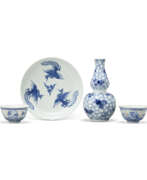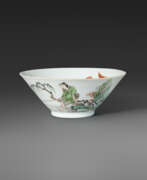Kangxi period

Kangxi period
The Kangxi period, spanning from 1661 to 1722, marks the reign of Xuanye, the third emperor of the Qing dynasty and a notable Manchu ruler in Chinese history. This era is distinguished as one of the longest reigns by a single emperor and is celebrated for its significant contributions to art, culture, and governance.
Xuanye, known as the Kangxi Emperor, ascended the throne at the tender age of seven. During his early years, regents and his grandmother, the Grand Empress Dowager Zhaosheng, held actual power. However, from 1669 onwards, Kangxi took control, showcasing his abilities as an effective and learned leader. His reign brought stability and wealth after years of chaos, marking the beginning of the "Prosperous Era of Kangxi and Qianlong" or "High Qing."
One of Kangxi's most notable achievements was the suppression of the Revolt of the Three Feudatories, along with the defeat of the Dzungars in the northwest and the conquest of Taiwan in 1683. He also successfully negotiated the Treaty of Nerchinsk with Russia in 1689, stabilizing the northern frontier. Under his rule, China expanded its territory and strengthened its international presence.
Culturally, the Kangxi period was a renaissance in arts and sciences. The emperor himself was an admirer of learning, often engaging in scholarly discussions and demonstrating a keen interest in Confucian philosophy. He commissioned significant literary works, including the Kangxi Dictionary and the Complete Tang Poems. In the realm of art, Kangxi's patronage led to the flourishing of painting, calligraphy, and porcelain-making, exemplified by the 'Southern Inspection Tour' scrolls and the exquisite porcelain produced at the imperial kilns in Jingdezhen.
The Kangxi Emperor's appreciation for European knowledge and technology is evident in his engagement with Jesuit missionaries. He was open to their mathematical and scientific expertise, which influenced the arts and scholarship of his court. The Emperor's establishment of the Palace Workshops marked a significant collaboration between Chinese and European artists, leading to advancements in scientific instruments and enameled porcelains.
For collectors, art historians, and aficionados of Chinese antiques, the Kangxi period presents a realm of fascinating exploration. If you're eager to dive deeper into the art, culture, and history of this pivotal era, we encourage you to join our community. Subscribe to our newsletter for in-depth articles, updates on special collections, and exclusive invitations to events and exhibitions centered around the Kangxi period. Enhance your understanding and appreciation of this golden era in Chinese history.
| Country: | Asia, China |
|---|---|
| Start of the period: | 1661 |
| End of the period: | 1722 |







